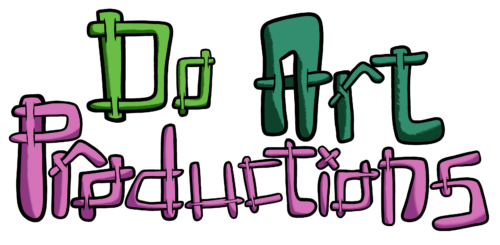Hello to everyone out there in the Do Art Universe!
We’re getting ready to launch an amazing 2024, with a full slate of art and poetry workshops, comics, and our continued quest to bring art and the benefits of creativity to the world. In that spirit, I’ve been getting ready to run some all-new POETRY WORKSHOPS!

Reciting Poetry: Rhythm, Volume, and Tone
Running a “poetry” workshop presents some challenges that “comic” workshops do not. While comics, and comic books, are broadly popular to a larger audience, “poetry” has associations with difficulty and complexity–with tortured thoughts and linguistic cleverness. These are absolutely qualities of poetry–Emily Dickenson springs to mind as an example of both–but in considering the BUILDING BLOCKS of poetry I wanted to set some of our preconceived notions about it aside.
Much like with comics, we begin with the basics. In comics, these are the eyes, the pose of a figure, and the ways that visual art can express emotion through a language of line and seeing. One of the challenges with poetry is that it’s both a visual AND an auditory medium: expressed through sound as well as sight. In many ways, poetry is about using words in their visual form to evoke the sound that they make. But poetry as an artform predates the invention of writing, and so it makes sense, when first beginning, to talk about poetry as THE MUSIC OF WORDS.
Music has much to teach us about poetry. In introducing the “building blocks” of poetry, I explain that there are three elements of music that we can use in poetry. The first is RHYTHM: how fast or slow you say something. In poetry this can lead to a discussion of syllables and even meter, but for the purposes of beginning I simply say that we can say a word FAST or SLOW. Saying a word or sentence FAST can create excitement, anxiety, or confusion. Saying a word SLOW can create drama, calmness, or anticipation.
The second element we cover is VOLUME. We can say a word LOUD, evoking surprise, anger, or joy. We can say a word QUIETLY, evoking softness, fear, or thoughtfulness. The third element, often misunderstood, is TONE or PITCH. We can say a word HIGH–in a cartoonish falsetto. We can say a word LOW–a growling rumble that can evoke seriousness. In exaggerated form TONE can be a funny exercise in voice modulation–but it also plays an important role in meter, as the relative high- or low-ness of a syllable can be used to build RHYTHM as the voice of the speaker rises and falls as she recites a poem.
Why Poetry?
Taken together, these 3 musical facets–RHYTHM, TONE, and PITCH–are ways we can make our poetry more expressive when we recite it–to bring more emotion into our performance of poetry. While poetry, of course, does not need to be performed, I would argue that putting audiences in touch with the performative, musical qualities of language are extremely important when introducing poetry to first-time audiences, especially kids.
At DO ART PRODUCTIONS, a major objective is not only bringing creativity to people, but also using creativity to build SELF-CONFIDENCE in the people we meet. One of the biggest fears for people of any age is public speaking–expressing oneself in front of a crowd of people or in a social setting. There are many ways to alleviate this fear by becoming better at what Chris Anderson (of TEDTalk fame) calls “presentation literacy.” But one of the ways we can become better presenters–better talkers–is by accessing the full power of the most amazing musical instrument in the world: the human voice.
In introducing POETRY, both as a short expression of language (we prefer the 3 line poem), and as an opportunity for vocalization, we teach the audience how to think of their own voice as an opportunity for creative expression. Often the way we use our voices is reactive. We get loud when we’re angry, speak fast when we’re nervous, and high-pitched when we’re scared. Using these musical elements deliberately in the context of poetry–where there are no “good” or “bad” emotions, just opportunities to communicate these emotions to others–allows us all to become more aware of how we communicate to people in general. Ultimately, poetry is expressive language–and all language is an opportunity for expression. In other words, all language is
poetry.
Language is perhaps the most incredible “creative superpower” that human beings have, and by accessing the musical qualities of language–by looking at RHYTHM, VOLUME, and TONE–we a lay a foundation that can allow us to explore poetry, performance art, and even other forms of writing. And by allowing people to take better control of their greatest musical instrument–their voice–we help them become better at the artform of being human itself: an art that lasts all our lives, the greatest gift we can give back to the world we came from.



Pingback: Art and Personality: Jerry's Mexico Poems - Do Art Productions